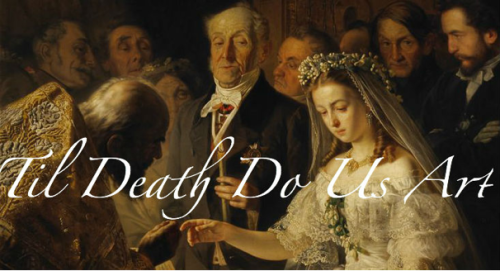
The new season of Game of Thrones premiered last week, and accordingly, I’ve continued our series of “Til Death Do Us Art: Marriage, Italian Renaissance Style” with a wedding wish list worthy of Ramsay Bolton, TV’s most cringe worthy male chauvinist (outside of political news, that is). Like Paula Deen planning a plantation wedding with all-black serving staff while categorically denying the hideously racist overtones, many Ren faire regulars stay blissfully unaware (or choose to ignore) that the entire premise is rooted in nostalgia for a violently misogynistic time.
A wedding simply wouldn’t be Renaissance without patriarchy, pageantry, and presents, and the piece de resistance of every Renaissance gift table was the cassone.
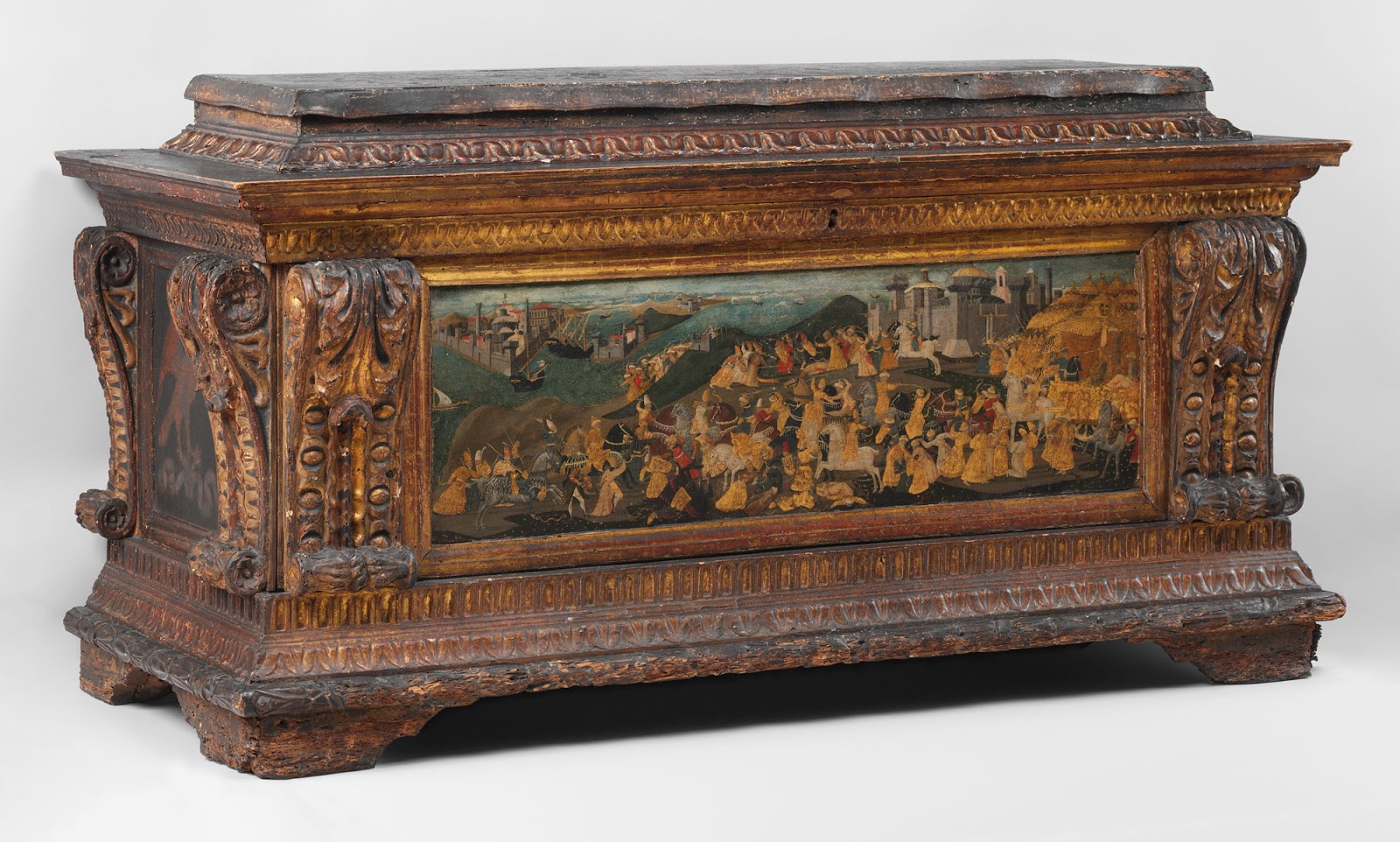
Cassone with painted front panel depicting the Conquest of Trebizond attributed to the workshop of Apollonio di Giovanni di Tomaso, at the Metropolitan Museum of Art.
The cassone was a chest or pair of chests, given to a bride on the occasion of her marriage, and placed in the bridal suite for the deflowering. From a practical standpoint, the cassone was a place to store the bride’s trousseau, but symbolically it represented her father turning her over as a material asset to the groom.
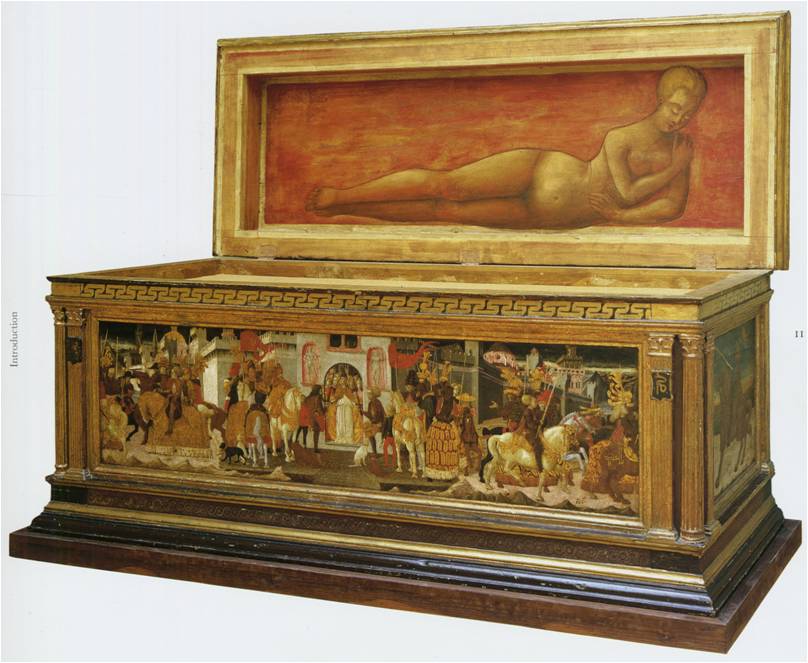
Erotic cassone from the workshop of Giovanni de ser Giovanni Guidi (Lo Scheggia), at the Statens Museum for Kunst.
Cassoni (like the one above) were often decorated with fertility symbols, provocative nudes to inspire the couple to love, or in the case of Nastagio degli Onesti, scenes of patriarchal violence to horrify the bride into submission.
Botticelli’s Nastagio degli Onesti series is perhaps the most famous depiction of courtship and marriage from Renaissance Italy. Based on Boccaccio’s The Decameron, it’s a timeless tale of boy meets girl, boy terrorizes girl with the threat of being hunted down by dogs, disemboweled and having her intestines eaten, boy gets girl. You know, a typical date night in fifteenth-century Italy!
Young Nastagio of Ravenna loves a noble girl, but she rebuffs his advances and gives him a nasty case of blue balls. Seething with entitled rage, Nastagio goes into the forest to brood in peace, where he witnesses the spectre of a naked woman being bitten by dogs while a knight chases her with a sword.
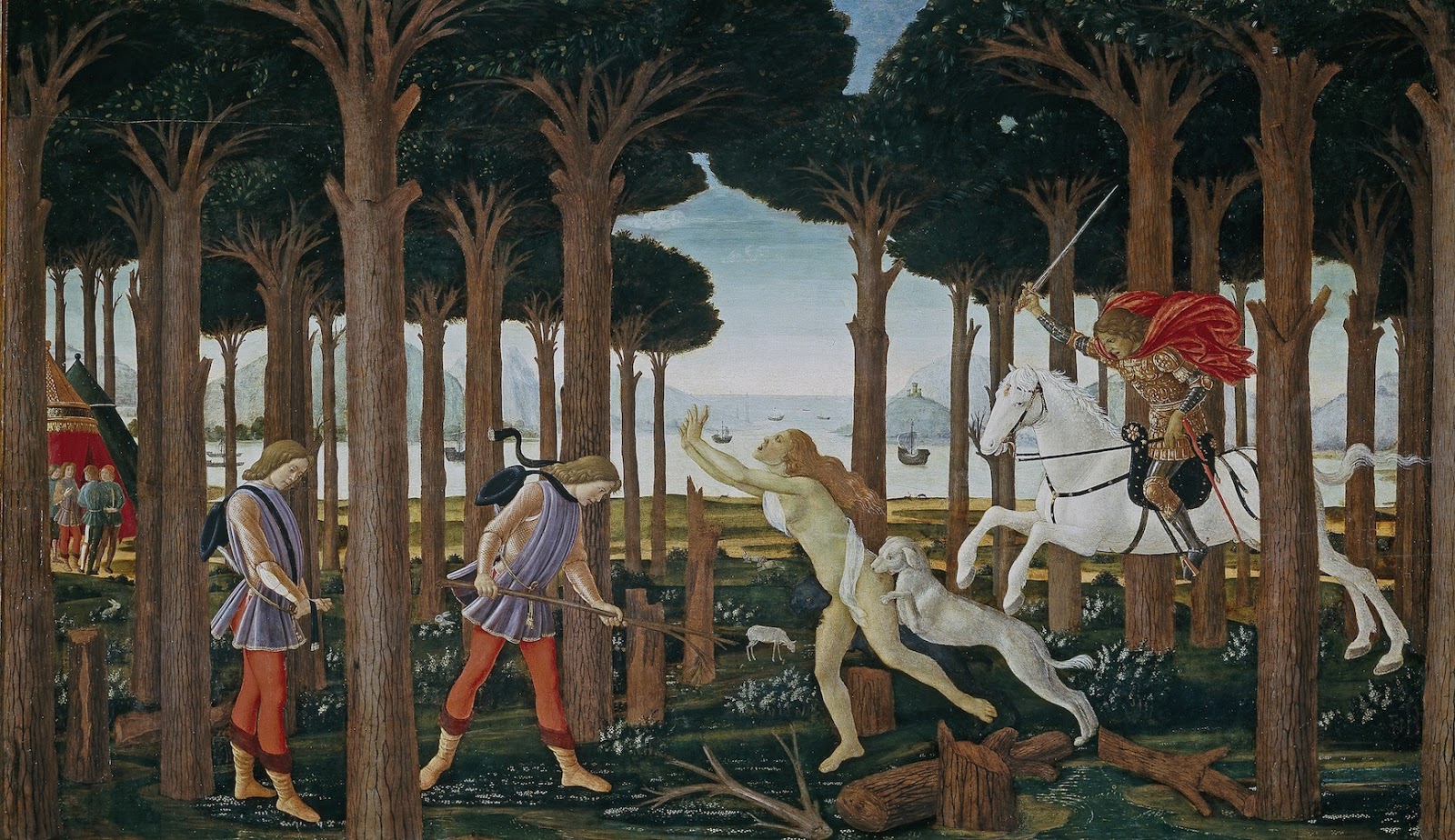
The Story of Nastagio degli Onesti (Part 1) by Sandro Botticelli, at the Prado National Museum.
Nastagio rushes to help, but the knight explains that the woman rejected him in life, so as punishment for having the gall to say no, she must spend the afterlife being hunted down by his dogs, stabbed, disemboweled and having her innards fed to the hounds. This seems perfectly reasonable to Nastagio, so he decides not to intervene. However, he hatches an epic prank to scare his hapless love into bed with him.
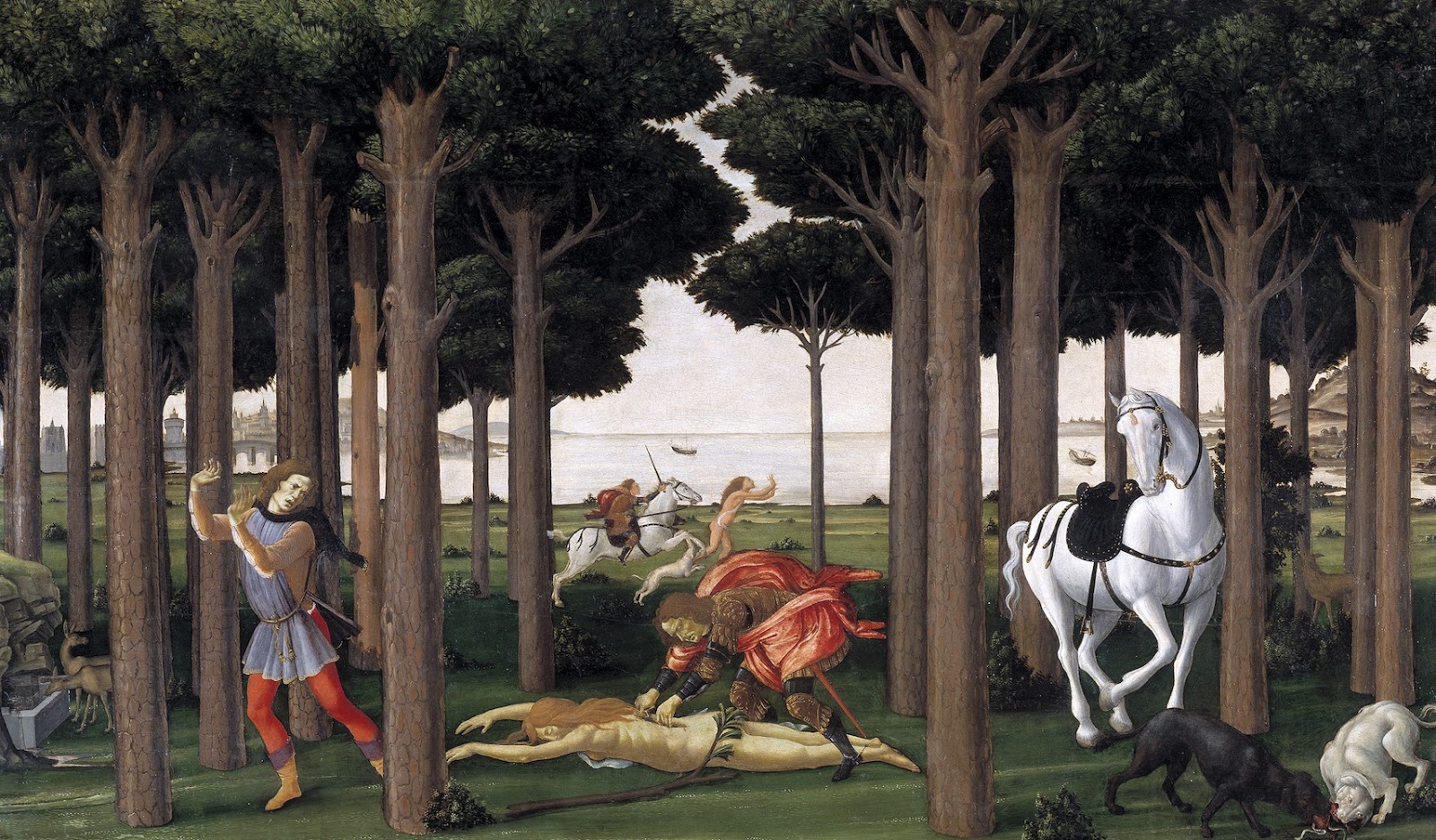
The Story of Nastagio degli Onesti (Part 2) by Botticelli, at the Prado National Museum.
Nastagio arranges a lavish feast in the forest, and invites the reluctant object of his desire. When she witnesses the spectacle of the phantom girl’s brutal murder, she agrees to marry Nastagio on the spot lest she meet the same fate. That old “hounds will devour your innards of you don’t go out with me” line works every time.
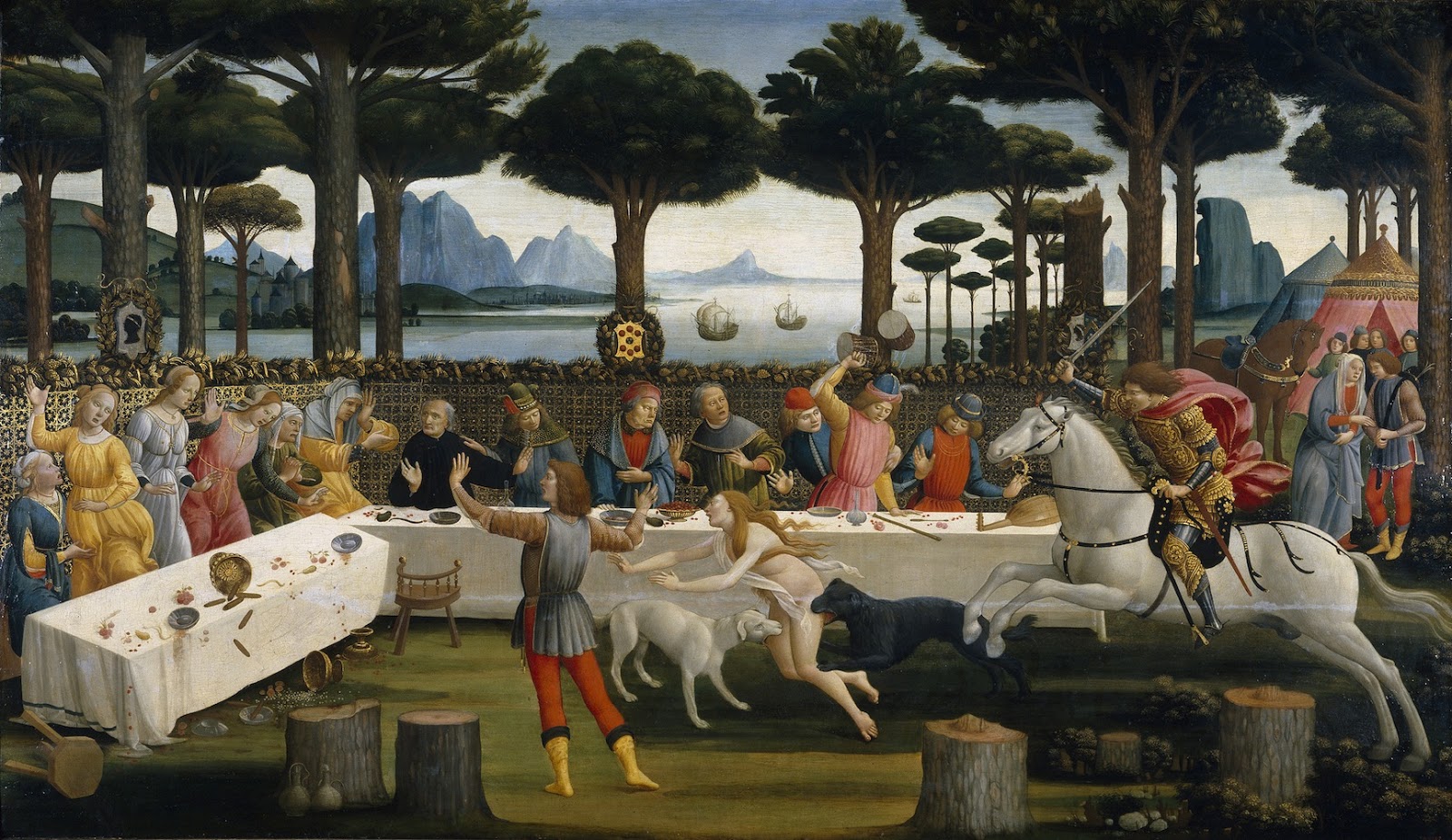
The Story of Nastagio degli Onesti (Part 3) by Botticelli, in the Prado National Museum.
They are married the following Sunday, and everyone lives happily ever...presumably except for the bride, who will spend the rest of her life putting out for a gross dude she never liked to begin with because it’s either that or being eaten by dogs. Adding insult to injury, all the women of Ravenna learn forever more that if a man asks, for the love of God, just say yes!
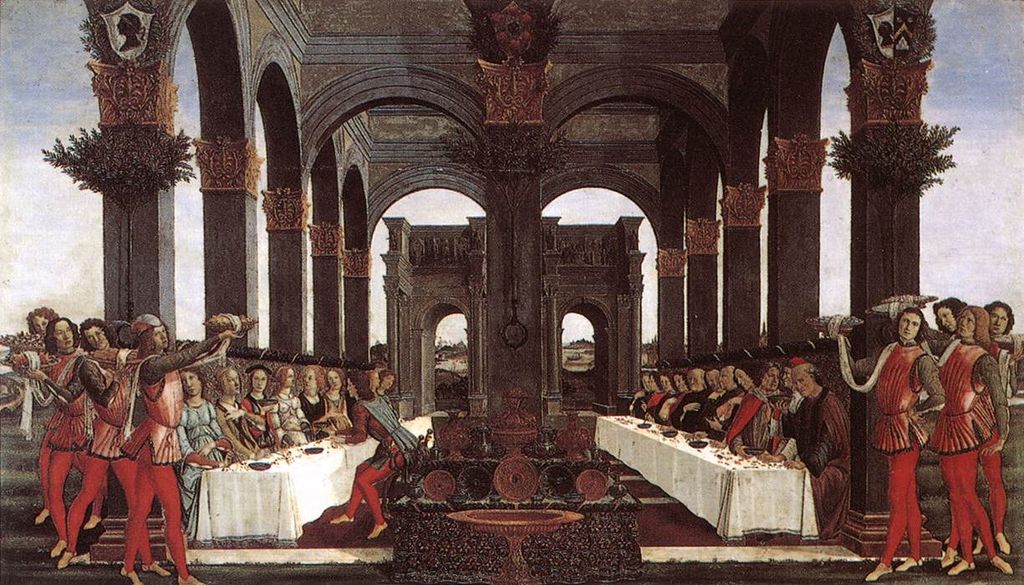
The Wedding Feast by Botticelli, in a private collection.
Naturally for a society in which “rape culture” was simply “culture,” this macabre domestic tragicomedy became a popular theme of weddings. The scenes of the story were a favorite motif on cassoni, pageants reenacting the events were a standard entertainment, and Botticelli's series was originally commissioned by Lorenzo the Magnificent to commemorate his son’s wedding, which probably went down something like this:
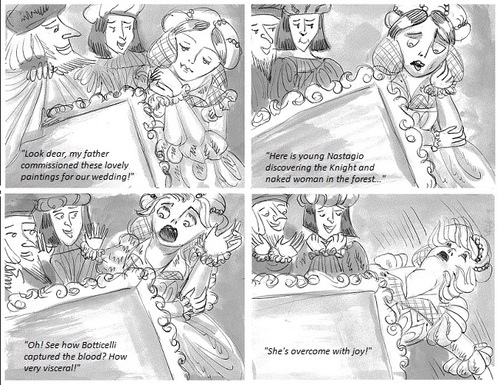
Don’t forget to register for a cassone; and if you consider bloodhounds to be an integral part of foreplay, and your dreamgirl and/or style inspiration is Sansa Stark or her doppelganger, Simonetta Vespucci...
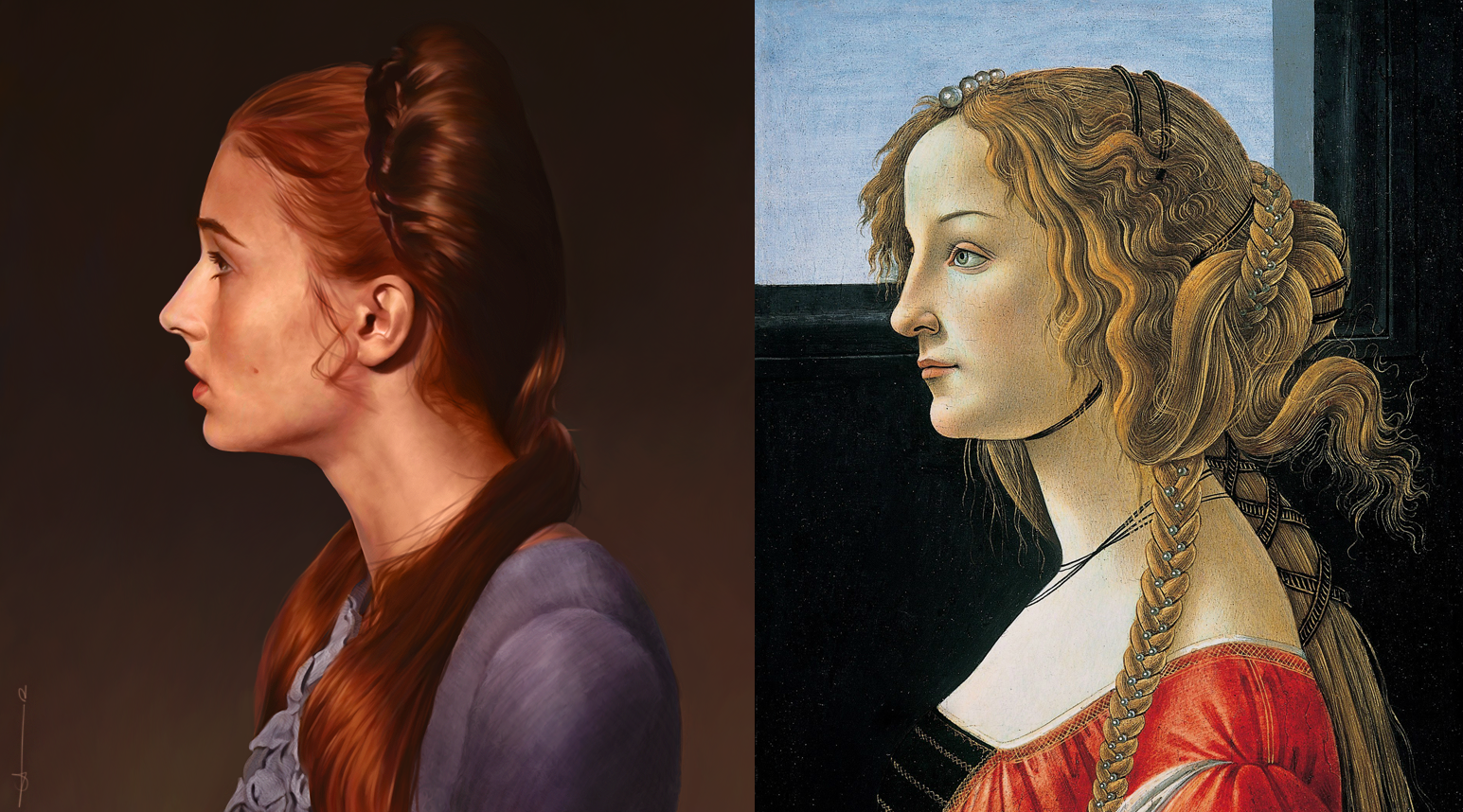
Sophie Turner as Sansa Stark (left), Portrait of a Young Woman by Botticelli, at the Gemaldegalerie (right).
...then look back on our Renaissance wedding dresses in Say Aye to the Dress, and stay tuned for tips on venue and menu for an authentic period affair.










